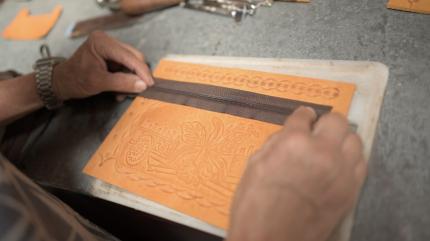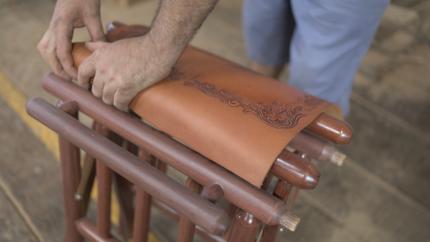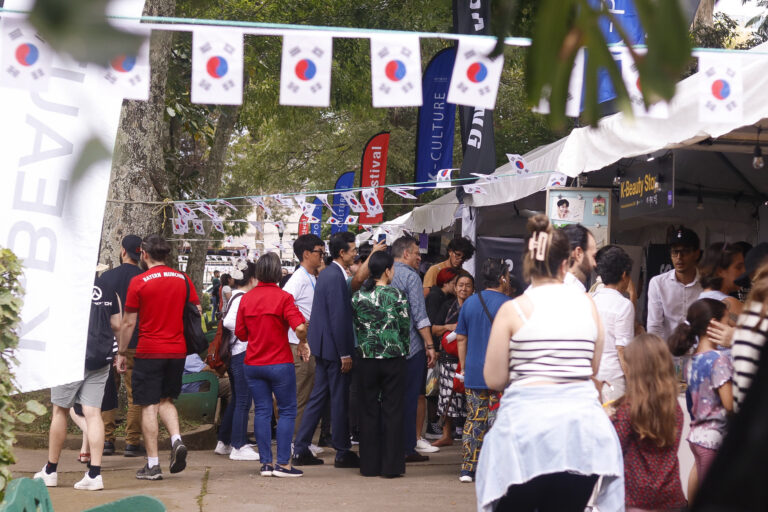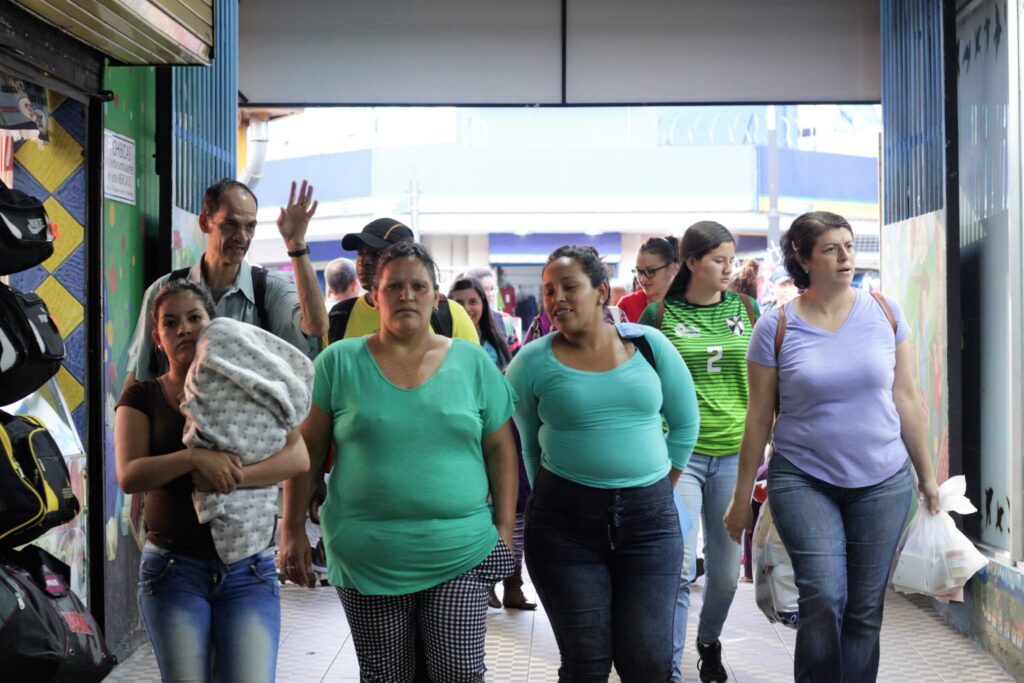In the 2025 edition of the contest “Our Traditional Crafts,” the thematic focus has been selected as the leather trade, a practice that has its roots in the pre-Columbian period and which, over time, has maintained techniques, tools, and meanings that reflect the relationship between humans, the territory, and culture.
- Registration is open and closes on July 31, 2025, at www.mcj.go.cr
- Contest by the Ministry of Culture and Youth, through the Cultural Heritage Directorate, offers 25 prizes distributed in four participation categories.
- Consult the participation guidelines HERE
- For inquiries, you can write to WhatsApp 84728709
Leather craftsmanship is a legacy that has endured through generations. It represents knowledge, tradition, cultural heritage, and the vibrant soul of communities. In the 2025 edition of the “Our Traditional Crafts” Contest, leather craftsmanship has been selected as the thematic focus, a practice that has its roots in the pre-Columbian period and that, over time, has maintained techniques, tools, and meanings that reflect the relationship between human beings, territory, and culture. This artisanal tradition continues to thrive in different regions of the country, where artisans transform this material into useful, symbolic, and profoundly identity-affirming objects.

Leatherwork is an expression of a long chain of knowledge transmitted from generation to generation, beginning with the treatment of the raw material, its tanning and softening, through to cutting, shaping, embossing, dyeing, and assembly. Each piece carries a living memory: of the craft learned within the family, of the ancestral use of materials, of techniques preserved and adapted to new contexts, and of the deep bond with the economic and social dynamics of the community.
The Ministry of Culture and Youth, through the Cultural Heritage Directorate, holds this contest every two years with the purpose of valuing, registering, raising awareness, strengthening, and safeguarding traditional artisanal techniques, knowledge, and skills shared orally across generations. Likewise, this contest helps to reassert the craft of people dedicated to artisanship as a means of livelihood, as well as their contribution to the country’s economy and tourism development.
“Through this contest, we seek to promote the knowledge, appreciation, registration, documentation, and safeguarding of the craft based on the traditional art of leatherwork, giving importance to those who are practicing it, where they are located, what materials they use, how they process these materials, how they inherited or learned the craft, and how knowledge is transferred to new generations. Likewise, we seek to identify the main strengths, opportunities, weaknesses, and threats faced by both the tradition and its bearers in order to safeguard this craft,” indicated Alexander Castro Mena, acting Minister of Culture and Youth.

For her part, Dayana Morales, anthropologist and contest coordinator, affirmed: “For this edition of the crafts contest, as in previous ones, a craft was selected that has its origins in the pre-Columbian period, maintaining its production techniques, functionality, and contribution to the local, regional, and national economy. Leather as a raw material evokes the tanning and processing of hides and raw materials whose natural and physical properties allow for a multifunctionality widely used by artisan populations and of great importance for Costa Rican culture and identity.”
Participation. “Leather Craft: Legacy and Design” is aimed at artisans who are bearers of tradition, as well as creators in the leather craft, who are of legal age and Costa Rican, or residents in the country with legal immigration status at the time of registration and with at least ten years of residence in Costa Rica. Interested individuals must review the participation guidelines and complete the registration form, information that they will find on the Ministry of Culture and Youth’s website www.mcj.go.cr and in the annexes of the participation guidelines.
The registration form will be available from June 1 to July 31, 2025, must be filled out online, and is accessible from a cell phone, tablet, or computer. Categories. Interested individuals can participate in one of the four individual entry contest categories. This is for the purpose of recognizing the work of artisans from the diverse social sectors present in the national territory. Indigenous: This is craftsmanship that has been carried out from generation to generation by individuals or families who inherited the knowledge of the country’s indigenous peoples, from which they originate, namely: Huetar, Chorotega, Maleku, Bribri, Cabécar, Térraba or Teribe/Bröran, Boruca or Brunka, and Ngäbe.
Processes, designs, forms, colors, finishes, and aesthetic elements that are unique to the collective cultural identity of these peoples apply. Traditional Folk: This category groups leather creations distinguished by the execution of traditional techniques widely disseminated throughout the national territory. It represents knowledge transmitted orally within the family and community, a result of cultural blending that integrates indigenous, European, African, and Asian traditions. Pieces made by hand, using manual or mechanical tools, whose functionality may be utilitarian, symbolic, decorative, or ritual, reaffirming popular identity and cultural roots, are valued. Contemporary: This category values the reinterpretation and innovation of leather craftsmanship based on the richness of traditional knowledge.
It recognizes artisanal work that dialogues with design, aesthetic experimentation, and the use of new technologies, maintaining an explicit link with traditional leather knowledge. The works may have utilitarian, symbolic, decorative, or ritual purposes, always demonstrating a clear link with Costa Rican cultural heritage through the integration of techniques. Master Bearer of Tradition: This category recognizes the trajectory of artisans who have dedicated their lives to the leather craft, practicing it continuously for a minimum period of 25 years.
These are master artisans whose hands, knowledge, and commitment have been fundamental in preserving the techniques, styles, and cultural values associated with this tradition. Their work reflects a deep connection with the collective identity of their community and with the cultural legacy they have managed to maintain, enrich, and share over time. Prizes: The contest has 25 acquisition prizes (see table), which means that the winning works become the property of the Cultural Heritage Directorate. Jury’s Decision and Exhibition:
The jury’s decision will be announced on Friday, October 17, 2025, at 10:00 a.m., as part of the opening ceremony of the exhibition of participating and winning works from the contest, which will take place at the Cultural Heritage Directorate until December 5.
Additionally, the decision will be communicated via the Ministry of Culture and Youth’s Facebook page. “The ‘Our Traditional Crafts’ Contest is a relevant call in terms of promotion, registration, and safeguarding of Costa Rican artisanal techniques. It is an opportunity to denote the skill, creativity, and diversity of knowledge and skills that compose it. With this, we seek to promote, at a national level, the participation and recognition of the expressions that make up manifestations of the intangible cultural heritage of the country’s communities, as well as their contribution to social, economic, and identity development,” concluded Morales.
For questions about the contest, you can contact Dayana Morales González, contest coordinator, via WhatsApp number 84728709. Additionally, you can also call tel.: 2010-7407 or write to the email: certamendeartesanias@patrimonio.go.cr Production – Cultural Heritage Directorate, MCJ


















